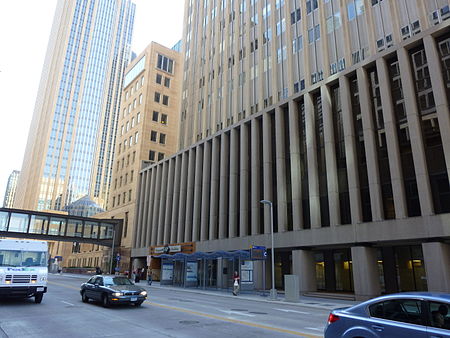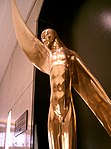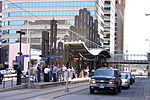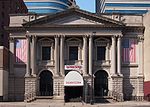510 Marquette Building
Buildings and structures in MinneapolisCass Gilbert buildingsFederal Reserve Bank buildingsGovernment buildings completed in 1915Government buildings in Minnesota ... and 2 more
Office buildings completed in 1915Skyscraper office buildings in Minneapolis

The 510 Marquette Building is a high-rise office building in downtown Minneapolis Minnesota. It was the first building for the Federal Reserve Bank of Minneapolis. It was designed by Cass Gilbert, architect of the Minnesota State Capitol building. It is located at 510 Marquette Avenue, at the corner of Marquette Avenue and 5th Street South in Minneapolis, right next to the Nicollet Mall station of the METRO Blue and Green light rail lines, and across from the Soo Line Building.
Excerpt from the Wikipedia article 510 Marquette Building (License: CC BY-SA 3.0, Authors, Images).510 Marquette Building
Marquette Avenue South, Minneapolis
Geographical coordinates (GPS) Address Website Nearby Places Show on map
Geographical coordinates (GPS)
| Latitude | Longitude |
|---|---|
| N 44.978055555556 ° | E -93.269166666667 ° |
Address
Soo Line Building
Marquette Avenue South 501
55401 Minneapolis
Minnesota, United States
Open on Google Maps











